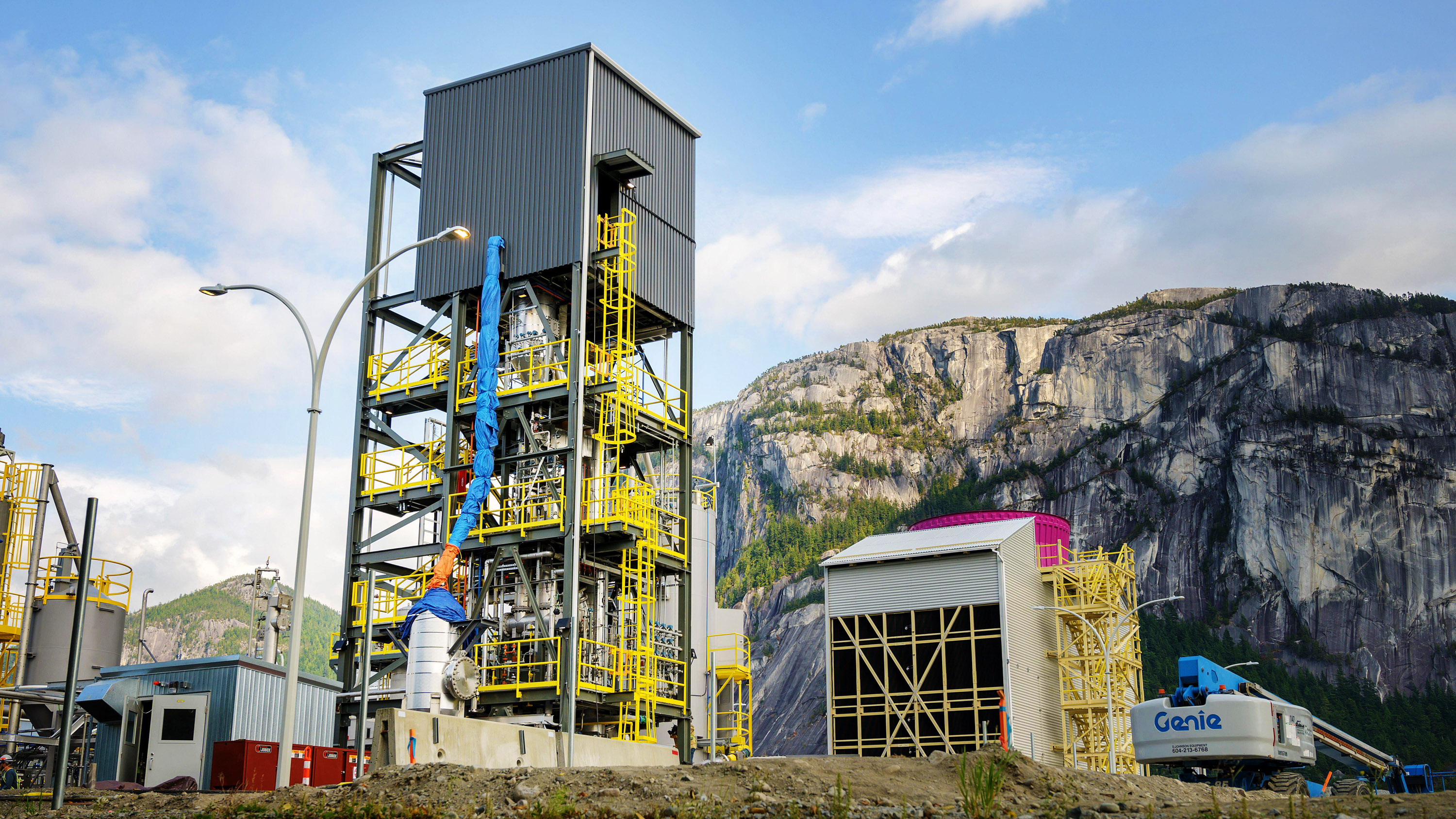A climate-focused venture firm plans to invest $350 million into carbon removal startups
Lowercarbon Capital’s plans are another sign of the increasing interest in the emerging sector as the dangers of global warming grow.

The venture capital firm Lowercarbon Capital has raised a $350 million fund dedicated to carbon removal startups, in another sign of the surging interest in a space that barely existed a few years ago.
The goal of the new fund, which MIT Technology Review is reporting exclusively, is to accelerate the development and scale-up of these companies, says Ryan Orbuch, a partner who recently joined the venture firm from Stripe to lead the fund. The firm will look specifically for startups developing ways of storing away carbon reliably and for long periods, helping to create the carbon removal capacity that could be required in the coming decades.
“The companies starting today will make this one of the world’s fastest-growing industries by the end of the decade,” Orbuch said in an email.
A variety of studies have found that by midcentury the world may need to remove billions of tons of carbon dioxide from the air each year, on top of rapid emissions reductions, to halt warming at 2 ˚C or pull the climate back into a safer zone. That’s because nations have already emitted huge amounts of greenhouse-gas pollution, and it’s likely to take decades to overhaul our existing energy systems. We also don’t yet have affordable ways of cleaning up certain sectors and products.
The problem is we don’t know how to do carbon removal on anything like these scales. Our current options include things like planting trees, building carbon-sucking machines, and spreading around carbon-absorbing minerals. But all of these are expensive, unreliable, short-lived, untested, limited, or otherwise challenging.
Lowercarbon Capital was founded in 2018 by Chris and Crystal Sacca, who oversaw early-stage investments into Instagram, Slack, Twitter, and Uber at their previous firm, Lowercase Capital. It has quickly emerged as one of the most prominent firms focused on climate tech.
The firm, which raised a separate $800 million climate fund last summer, backs companies “buying us time to unf**ck the planet” through three main approaches: adapting to the rising dangers, cutting greenhouse-gas emissions, or removing those gases from the atmosphere. Earlier investments in the latter area include Heirloom, which is using minerals to capture carbon dioxide; Running Tide, which is relying on seaweed; and Verdox, which has developed an electrochemical approach.
In a letter to potential contributors to the new fund, Chris Sacca wrote that “left to its own devices, Earth could take up to 100,000 years to cool back down to safe levels,” adding: “Therefore, in addition to dramatic emissions reductions, we need to suck CO2 back out of the sky and put it into the ground.”
Clay Dumas, a founding partner at Lowercarbon, says there’s a rapidly swelling market opportunity in this area given the growing purchases of tons of removed carbon by companies like Airbus, Microsoft, Shopify, and Swiss Re. He also notes the emergence of numerous platforms promising to help corporations assess and purchase reliable means of carbon removal, like Patch, Pledge, Sourceful, and Stripe Climate, which allows its customers to dedicate a portion of their revenue to purchasing future tons of removed carbon.
In related news, Stripe itself announced on Tuesday that major companies including Alphabet, Meta, McKinsey and Shopify had committed to buying $925 million worth of permanent carbon removal between now and 2030. The online payments company is also an investor in Lowercarbon’s new fund, and it plans to reinvest any profits from those investments into additional carbon removal.
There are concerns surrounding this emerging sector, including fears that companies or policymakers will count on carbon removal instead of figuring out ways of cutting emissions.
Nan Ransohoff, head of climate at Stripe, stresses that “radical emissions reductions” should remain the priority of governments and companies.
“It’s really important for folks like Stripe and all the partners working on [the carbon removal program] to loudly reemphasize that this is not a silver bullet by any stretch of the imagination,” she says. “The math is clear: we need both.”
There are also questions around how cheap we can ever make carbon removal, who will perpetually cover the costs of pulling down billions of tons, and why.
Much as with emissions reductions, achieving truly significant levels of carbon removal will likely require government policies that either encourage or mandate such practices, like a steep price on carbon. A few supportive measures are already in place, and a handful of additional proposals are under consideration.
Ransohoff says policy will be essential, noting that the level of carbon removal that may be needed by 2050 could cost around $1 trillion, which is about 1/100th of this year's expected global GDP.
“It’s very difficult to imagine voluntary markets scaling to that size,” she says. “Voluntary markets are great for getting us to first base, but policy is going to have to get us the rest of the way there. I don’t really see any way around that.”
Deep Dive
Climate change and energy
The problem with plug-in hybrids? Their drivers.
Plug-in hybrids are often sold as a transition to EVs, but new data from Europe shows we’re still underestimating the emissions they produce.
Harvard has halted its long-planned atmospheric geoengineering experiment
The decision follows years of controversy and the departure of one of the program’s key researchers.
Why hydrogen is losing the race to power cleaner cars
Batteries are dominating zero-emissions vehicles, and the fuel has better uses elsewhere.
Decarbonizing production of energy is a quick win
Clean technologies, including carbon management platforms, enable the global energy industry to play a crucial role in the transition to net zero.
Stay connected
Get the latest updates from
MIT Technology Review
Discover special offers, top stories, upcoming events, and more.